Abstract
A mortality odds ratio (MOR) study has been conducted to explore the cancer risks of exposures experienced in the production of optical lenses and metal spectacle frames. Male death certificates were obtained from a Massachusetts town where a large optical industry is located. Craftsmen, foremen, and operatives of non-optical industries, such as woollen textile workers and workers in the optical company with short-term or no exposure, were chosen as reference workers their incomes were similar to those of the exposed workers. Cardiovascular disease (total 714) is chosen as the reference disease to explore cancers (total 232). An excess risk of total cancers observed = 70, expected = 48) has formed among lens workers. The excess may be accounted for mainly by the excess risk of gastrointestinal cancers; the standardised MORs (sMOR) for medium and long-term exposure were 2.2 and 2.5. The excess was especially evident for colorectal cancers; the sMORs for medium and long-term exposures were 3.2 and 2.6. Excess risks of gastrointestinal cancers (sMOR = 2.9) and colorectal cancers (sMOR = 3.4) were found among metal frame workers with long-term (employed for more than 29 years) exposure, but the number of exposed cases was small (9 and 6 respectively). These results suggest that exposure to abrasives or cutting oil mists or both, possibly by ingestion, might increase the risk of gastrointestinal (especially colorectal) cancers among lens and metal spectacle frame manufacturers.
Full text
PDF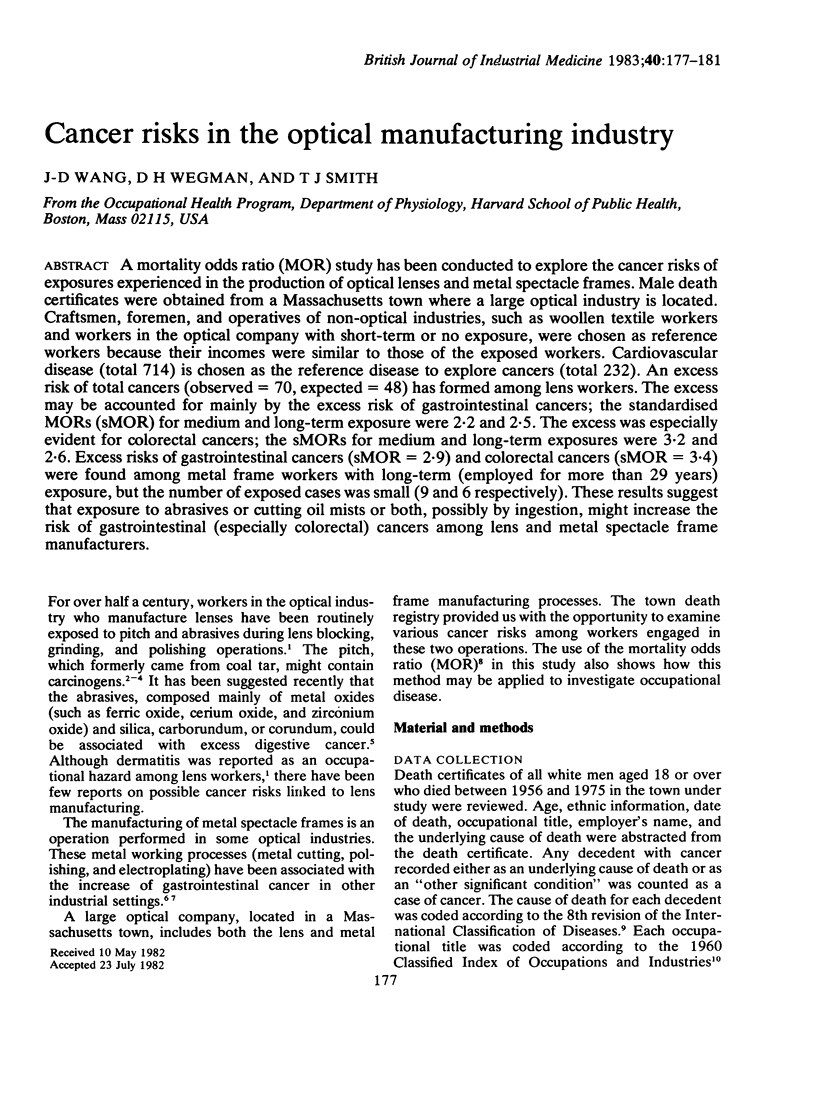
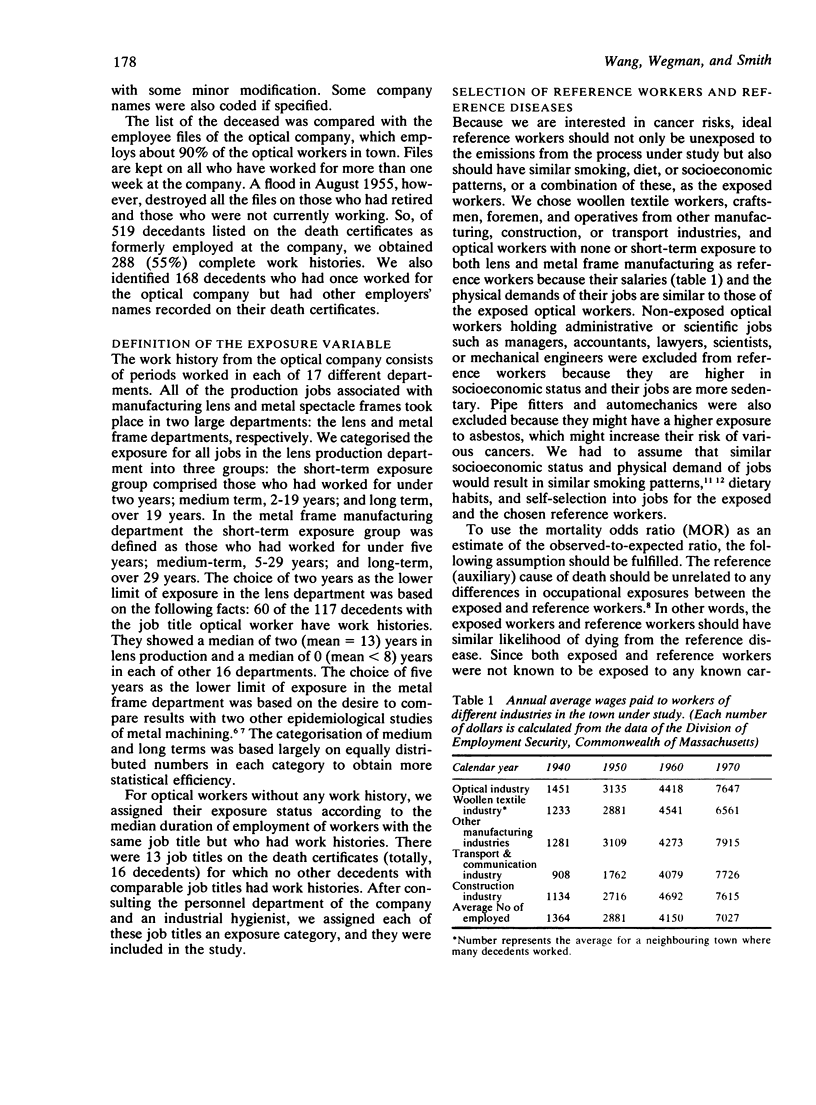
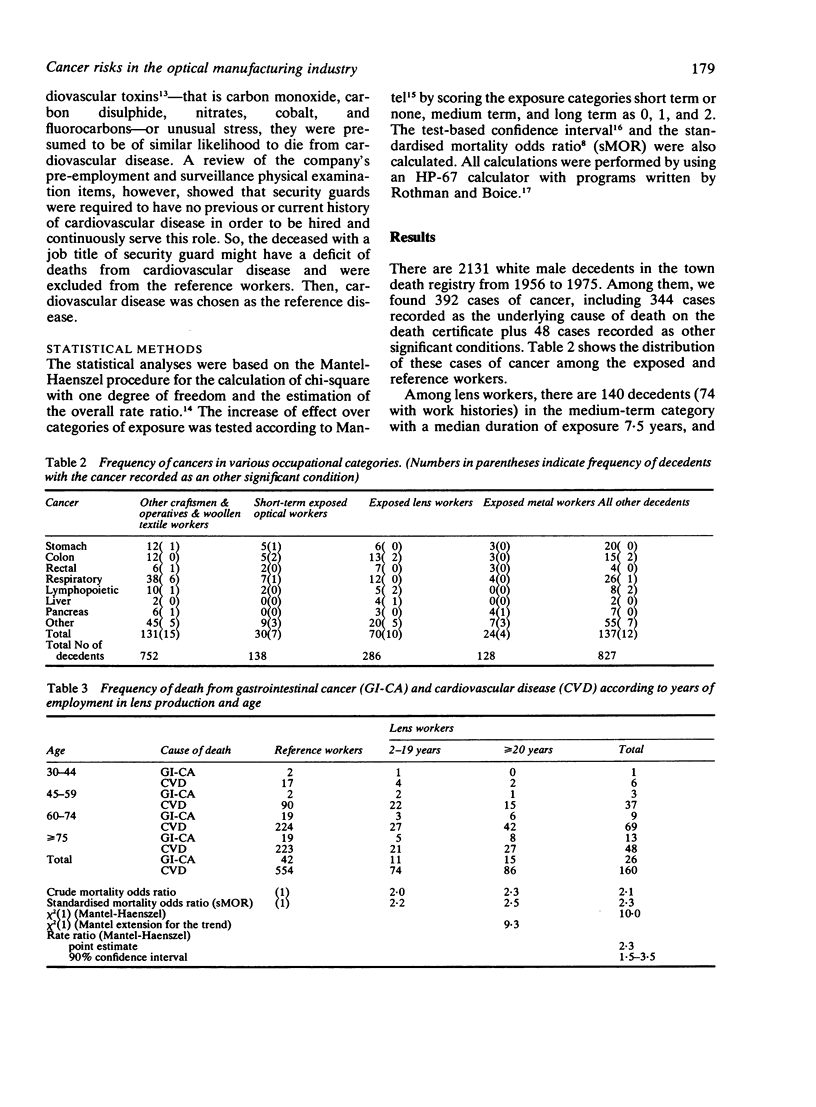
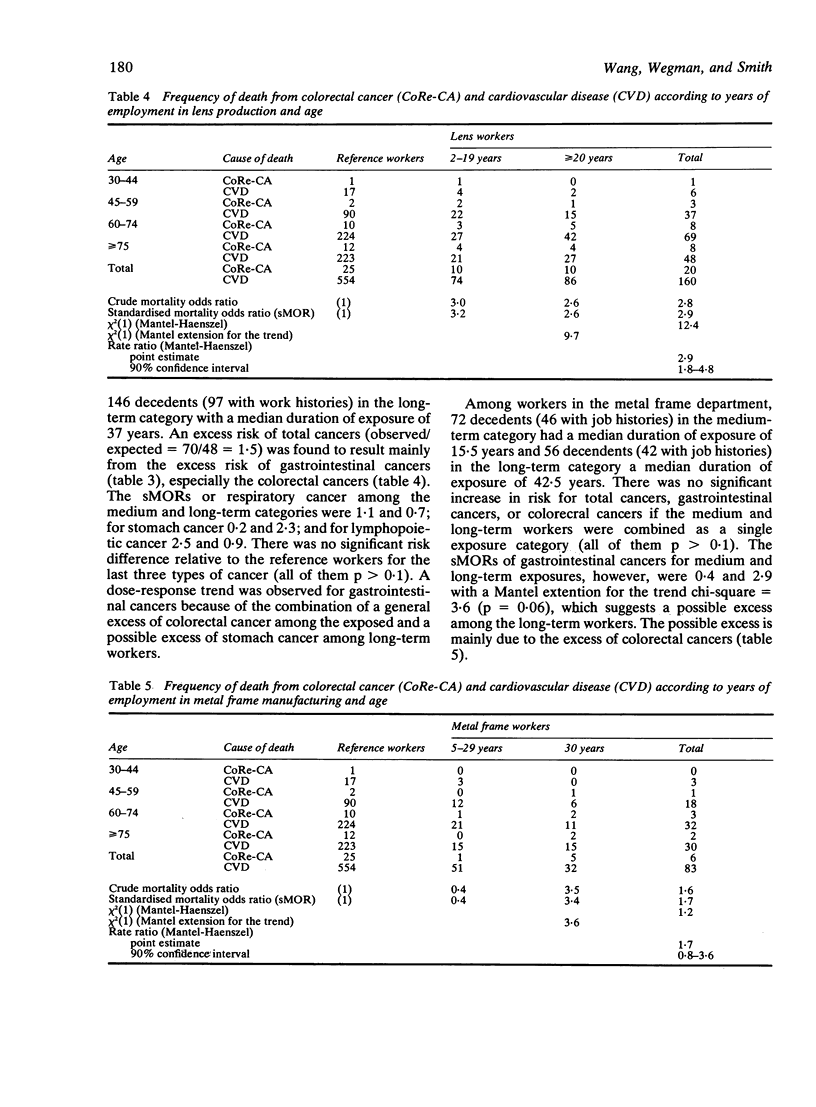
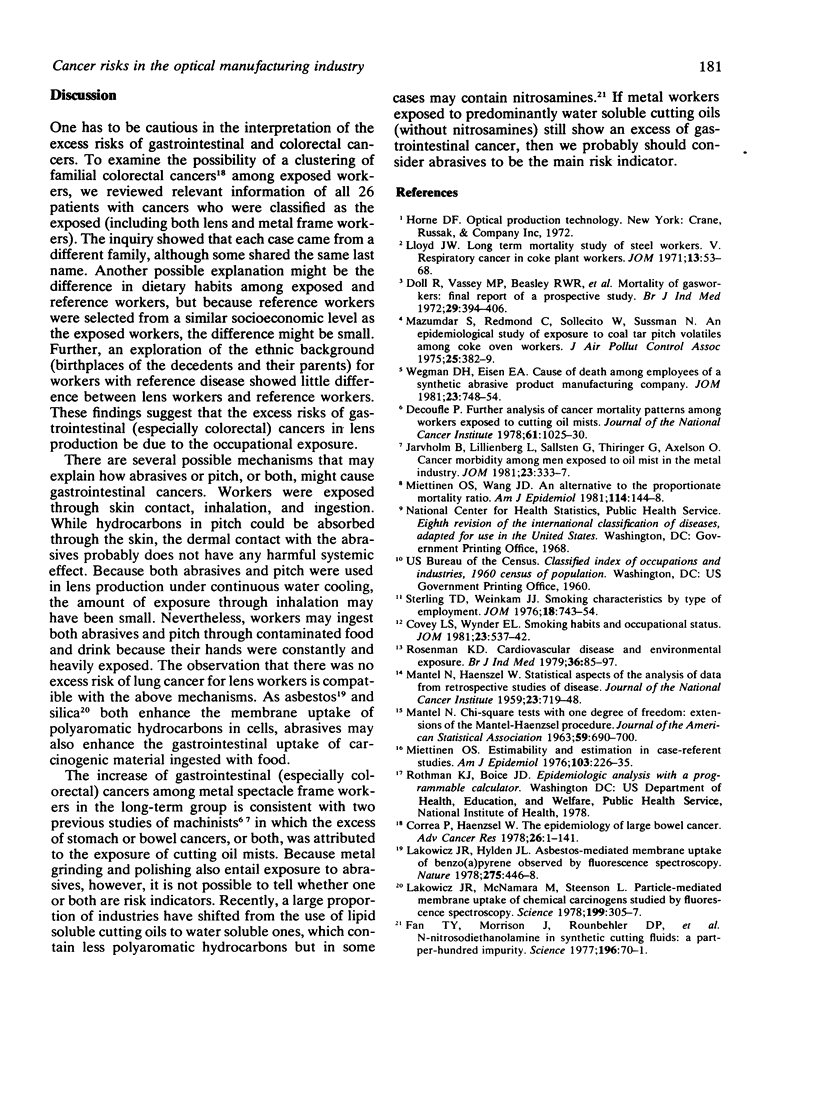
Selected References
These references are in PubMed. This may not be the complete list of references from this article.
- Correa P., Haenszel W. The epidemiology of large-bowel cancer. Adv Cancer Res. 1978;26:1–141. doi: 10.1016/s0065-230x(08)60086-x. [DOI] [PubMed] [Google Scholar]
- Covey L. S., Wynder E. L. Smoking habits and occupational status. J Occup Med. 1981 Aug;23(8):537–542. [PubMed] [Google Scholar]
- Decoufle P. Further analysis of cancer mortality patterns among workers exposed to cutting oil mists. J Natl Cancer Inst. 1978 Oct;61(4):1025–1030. [PubMed] [Google Scholar]
- Doll R., Vessey M. P., Beasley R. W., Buckley A. R., Fear E. C., Fisher R. E., Gammon E. J., Gunn W., Hughes G. O., Lee K. Mortality of gasworkers - final report of a prospective study. Br J Ind Med. 1972 Oct;29(4):394–406. doi: 10.1136/oem.29.4.394. [DOI] [PMC free article] [PubMed] [Google Scholar]
- Fan T. Y., Morrison J., Rounbehler D. P., Ross R., Fine D. H., Miles W., Sen N. P. N-Nitrosodiethanolamine in synthetic cutting fluids: a part-per-hundred impurity. Science. 1977 Apr 1;196(4285):70–71. doi: 10.1126/science.841341. [DOI] [PubMed] [Google Scholar]
- Järvholm B., Lillienberg L., Sällsten G., Thiringer G., Axelson O. Cancer morbidity among men exposed to oil mist in the metal industry. J Occup Med. 1981 May;23(5):333–337. [PubMed] [Google Scholar]
- Lakowicz J. R., Hylden J. L. Asbestos-mediated membrane uptake of benzo[a]pyrene observed by fluorescence spectroscopy. Nature. 1978 Oct 5;275(5679):446–448. doi: 10.1038/275446a0. [DOI] [PMC free article] [PubMed] [Google Scholar]
- Lakowicz J. R., McNamara M., Steenson L. Particle-mediated membrane uptake of chemical carcinogens studied by fluorescence spectroscopy. Science. 1978 Jan 20;199(4326):305–307. doi: 10.1126/science.202026. [DOI] [PubMed] [Google Scholar]
- Lloyd J. W. Long-term mortality study of steelworkers. V. Respiratory cancer in coke plant workers. J Occup Med. 1971 Feb;13(2):53–68. [PubMed] [Google Scholar]
- MANTEL N., HAENSZEL W. Statistical aspects of the analysis of data from retrospective studies of disease. J Natl Cancer Inst. 1959 Apr;22(4):719–748. [PubMed] [Google Scholar]
- Miettinen O. S., Wang J. D. An alternative to the proportionate mortality ratio. Am J Epidemiol. 1981 Jul;114(1):144–148. doi: 10.1093/oxfordjournals.aje.a113161. [DOI] [PubMed] [Google Scholar]
- Miettinen O. Estimability and estimation in case-referent studies. Am J Epidemiol. 1976 Feb;103(2):226–235. doi: 10.1093/oxfordjournals.aje.a112220. [DOI] [PubMed] [Google Scholar]
- Rosenman K. D. Cardiovascular disease and environmental exposure. Br J Ind Med. 1979 May;36(2):85–97. doi: 10.1136/oem.36.2.85. [DOI] [PMC free article] [PubMed] [Google Scholar]
- Sterling T. D., Weinkam J. J. Smoking characteristics by type of employment. J Occup Med. 1976 Nov;18(11):743–754. doi: 10.1097/00043764-197611000-00011. [DOI] [PubMed] [Google Scholar]
- Wegman D. H., Eisen E. A. Causes of death among employees of a synthetic abrasive product manufacturing company. J Occup Med. 1981 Nov;23(11):748–754. doi: 10.1097/00043764-198111000-00008. [DOI] [PubMed] [Google Scholar]


